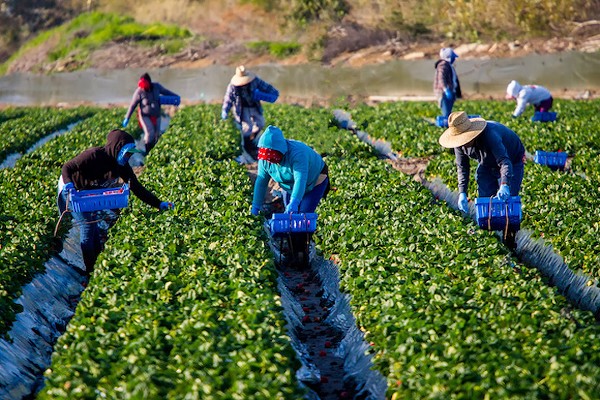(Adobe Stock)
The Farm Labor Organizing Committee was founded in 1968 to defend the rights and basic human dignity of farm workers regardless of immigration status.
A labor union representing agricultural workers in Ohio, North Carolina and Virginia says it isn’t waiting around for federal immigration reform to continue pushing for undocumented workers’ rights.
Nearly 200 delegates recently voted to re-elect Union President Baldemar Velasquez to a 14th term. Velasquez said the Farm Labor Organizing Committee plans to focus on defending workers employed on some of the state’s largest farms who often face wage and working-conditions exploitation.
“Laying the groundwork for talks we want to have with some of those big farms,” he said, “and with the greenhouse industry in that Norwalk area.”
According to the Ohio Department of Agriculture, thousands of migrant and seasonal workers enter the state each year to work on farms, in processing plants and at other agriculture-based businesses. An estimated 5,600 migrant workers are currently employed across the state.
Velasquez added that FLOC also plans to collaborate with other unions in fields where undocumented workers are overrepresented.
“The United Food and Commercial workers, a landscaping/greenhouse type of effort further east in Ohio,” he said, “so we want to make sure we partner with other unions who have an interest in this, because it’s going to help raise the boat for everybody.”
Looking forward to the next four years of his term, Velasquez said one of the union’s biggest priorities will be family farms. He pointed out that the narrative that pits farm workers against farmers must be changed, and noted that small farmers and migrant workers have shared economic interests.
“One of the resolutions we passed was to form an alliance between small family farmers and farm workers and negotiate ‘up’ in the supply chain,” he said, “creating pressure so we can create a sustainable pricing system to maintain those small family farms , so that we can preserve our jobs.”
The US Department of Agriculture says wages for crop and livestock workers have risen 1.1% annually over the past three decades. Within the last few years, farm wages grew by nearly 3%, largely due to producers’ difficulty finding farm labor.

